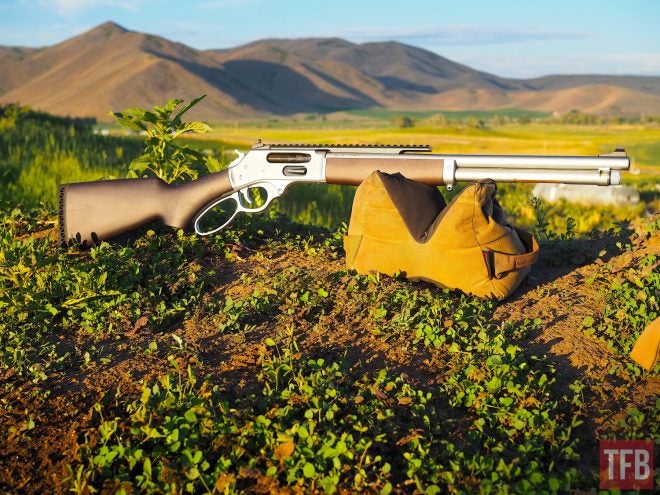New this year from Henry USA is an updated version of their All-Weather lever action rifle, now featuring a side-gate loading option and an extended Picatinny rail with a fully adjustable peep sight. In this article we’ll take a closer look at the updated Henry All-Weather Picatinny Rail .45-70 Side Gate lever action rifle.
Henry Reviews @ TFB:
- The Rimfire Report: A Henry AR-7 Cautionary Review
- TFB Review: Henry Lever Action Axe .410 – Cutting Down Non-NFA Competition
- TFB Review: Henry X Series: Suppressed Leverage
- TFB REVIEW: In Through The Side Door – Henry Loading Gate Lever Action In .45-70 Gov’t
- TFB Review: Henry Side Gate Lever Action Shotgun
- Review: Henry .45-70 H010 “Steel”

Henry All-Weather Picatinny Rail .45-70 Side Gate Rifle. Image Credit: Henry USA
Description of the new All-Weather lever action rifle per Henry:
In the 1980’s, a pioneer in the world of firearm training instruction named Jeff Cooper began to promote the concept of the scout rifle, an easy-carrying rifle that “will do a great many things equally well.” Strictly speaking, these were mostly .308 bolt action rifles, so we set out to make our own version of a scout rifle using our own lever action know-how. At the heart of it all lies one of our most popular centerfire rifles, the All-Weather .45-70 Side Gate.
The most identifiable feature of any scout rifle is the ability to mount a low-powered scope up further on the barrel as opposed to on top of the receiver. Mounting the scope closer to the front sight opens a huge amount of peripheral vision and makes target acquisition quick and natural, especially with a bit of practice in aiming and shooting with both eyes open. It also eliminates the possibility of getting struck by the scope due to recoil. Our extended picatinny rail provides ample space for you to experiment with this forward-mounting concept. Also in keeping with the scout rifle concept, the extended picatinny rail includes a fully adjustable peep sight to keep you quick on target even without a scope.
Like the other entries in our line of All-Weather rifles, we use a specially treated hardwood for the stocks and a satin hard chrome plating on most of the metal surfaces for exceptional durability. These finishes are permanently bonded to the underlying material and will never chip, peel, or flake. This .45-70 also features a 4-round capacity with our “best of both worlds” removable tube magazine and side loading gate configuration, sling swivel studs, a ventilated rubber recoil pad, and an internal transfer bar safety system.
So, is the Henry All-Weather .45-70 Picatinny Rail Side Gate a scout rifle, brush gun, hunting rifle, or guide gun? We will stick with “all of the above” and do so with confidence.

Note the difference between this specific model and the general Henry All-Weather side gate. Image Credit: Henry USA
First Impressions:
Right out of the box, I noticed the fit and finish of this rifle were impeccable. The hard-chrome finish was smooth and uniform on the receiver and barrel, and the stained hardwood was both smooth and provided good purchase at the same time.
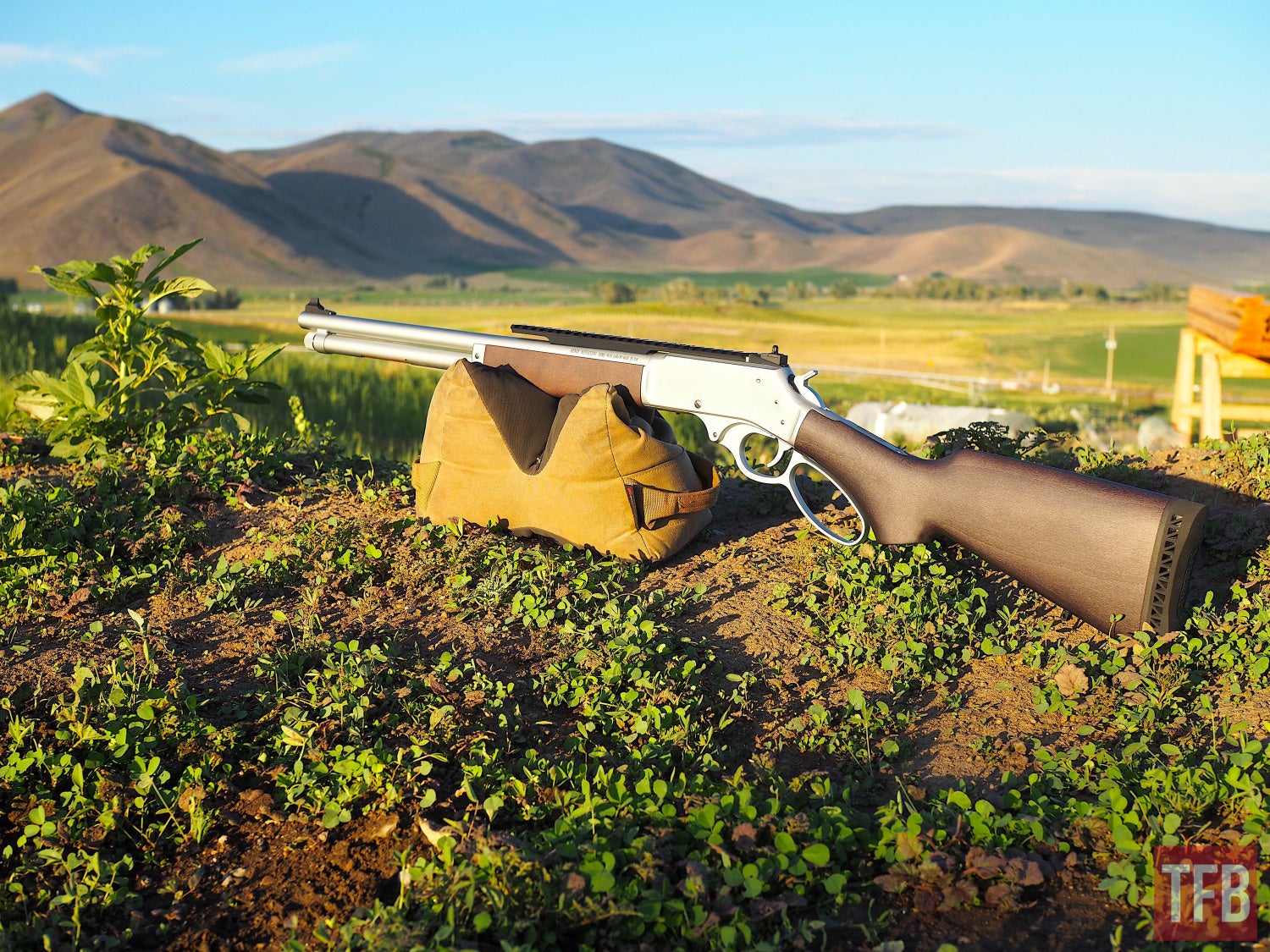
Henry All-Weather Picatinny Rail
I’ve only been able to handle the Henry All-Weather series in the air-conditioned (relative) comfort of a trade room floor before. Therefore, I was enthused to put this rifle through its paces during a few months of farm work during some of the worst heat waves we’ve ever had in the west.
The feel of the wood on this rifle is hard to describe, I highly recommend handling one in person. At first, I thought the lack of checkering on the stock was an oversight, but I soon found that even with sweaty hands on a 100+ degree day, the particular wood and finish Henry uses on this model still provided adequate purchase. The large loop lever is also extremely smooth to operate and comfortable for repeated use. Even though it is a “large lever” per Henry, I would equate it to most medium loop levers one would find in the Marlin/Winchester aftermarket.
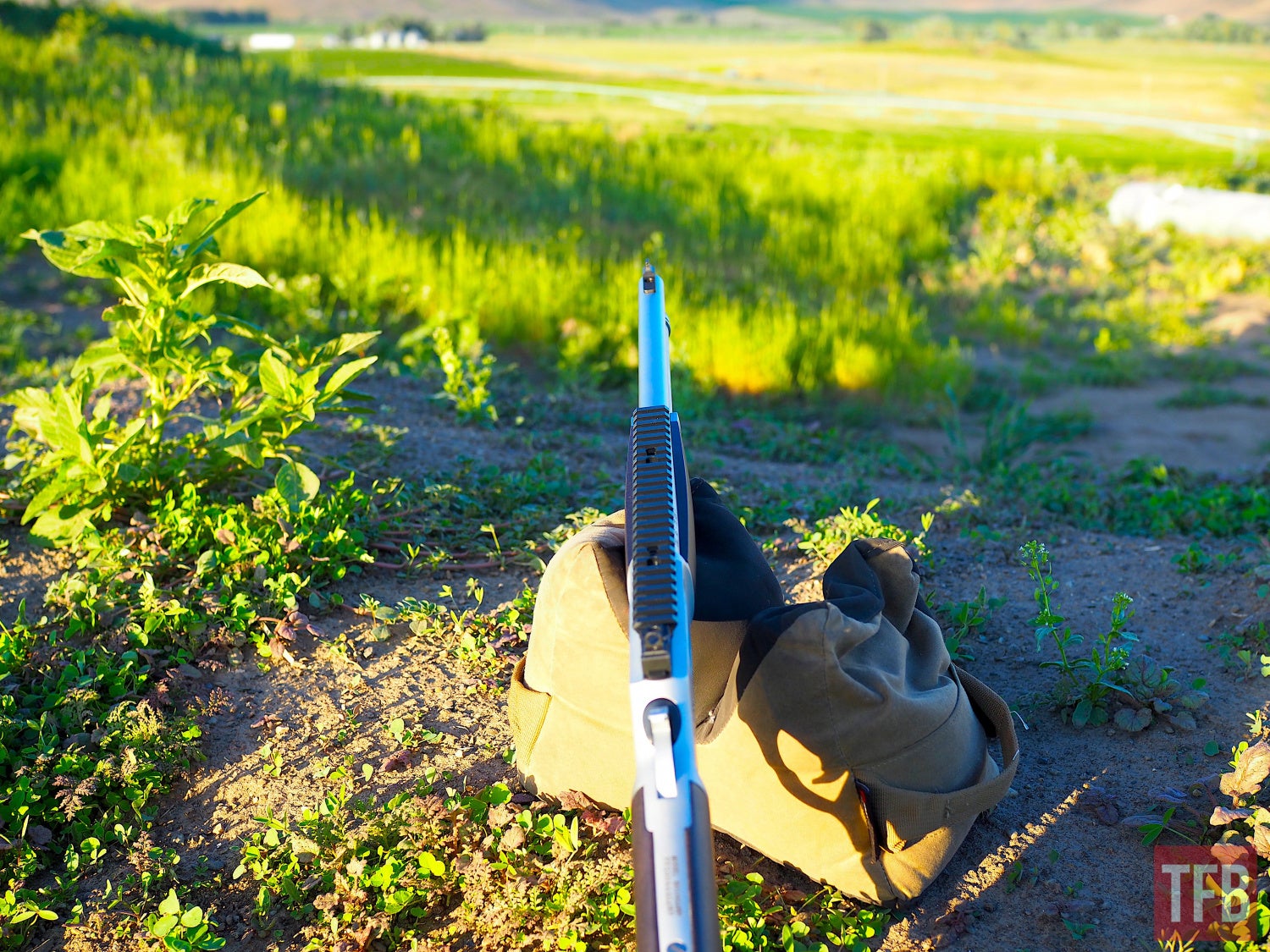
Extended top rail
The sights and sighting options are also very good on the Henry All-Weather. The fully adjustable rear peep sight adjusts for windage and elevation, and features adjustment reference dots for both, while the front is a plain black blade. The extended Picatinny rail provides options for traditional, long eye relief, or scout scopes as well. Overall, the Henry All-Weather Picatinny rifle is nearly perfect, the only thing that one might want to add is some threading or porting at the muzzle.
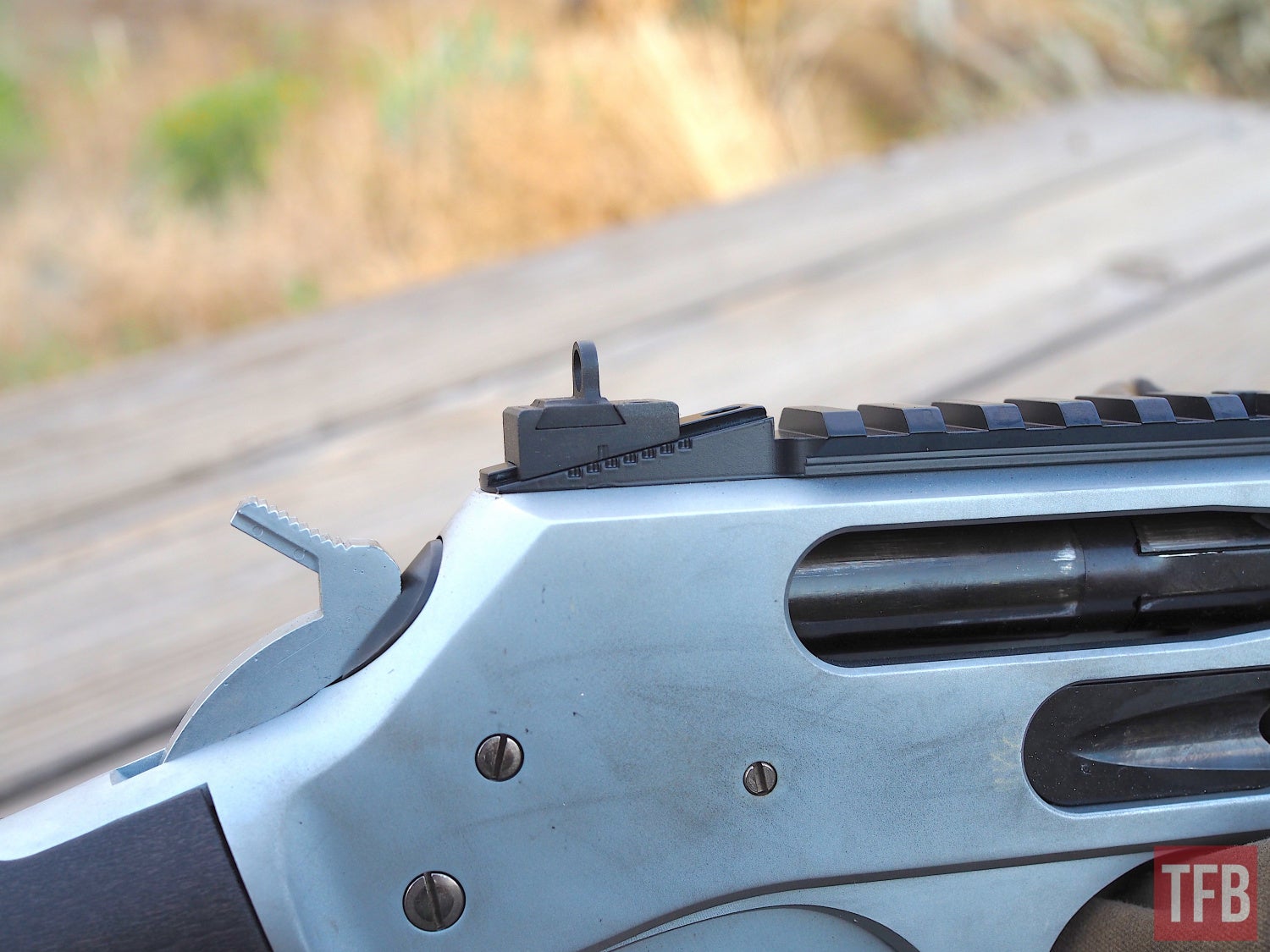
Rear sight. Note the adjustment reference dots
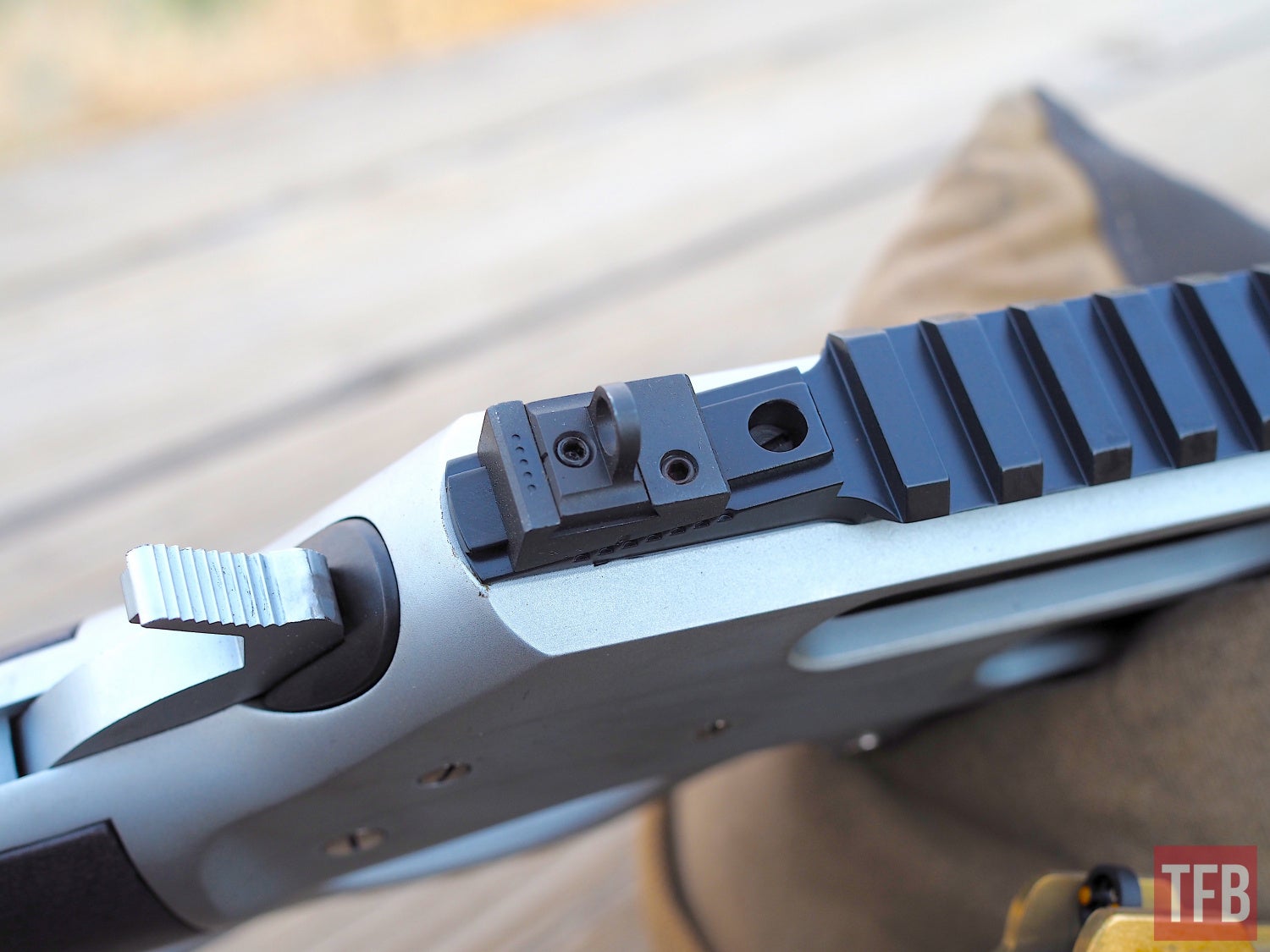
Rear sight. Note the adjustment reference dots
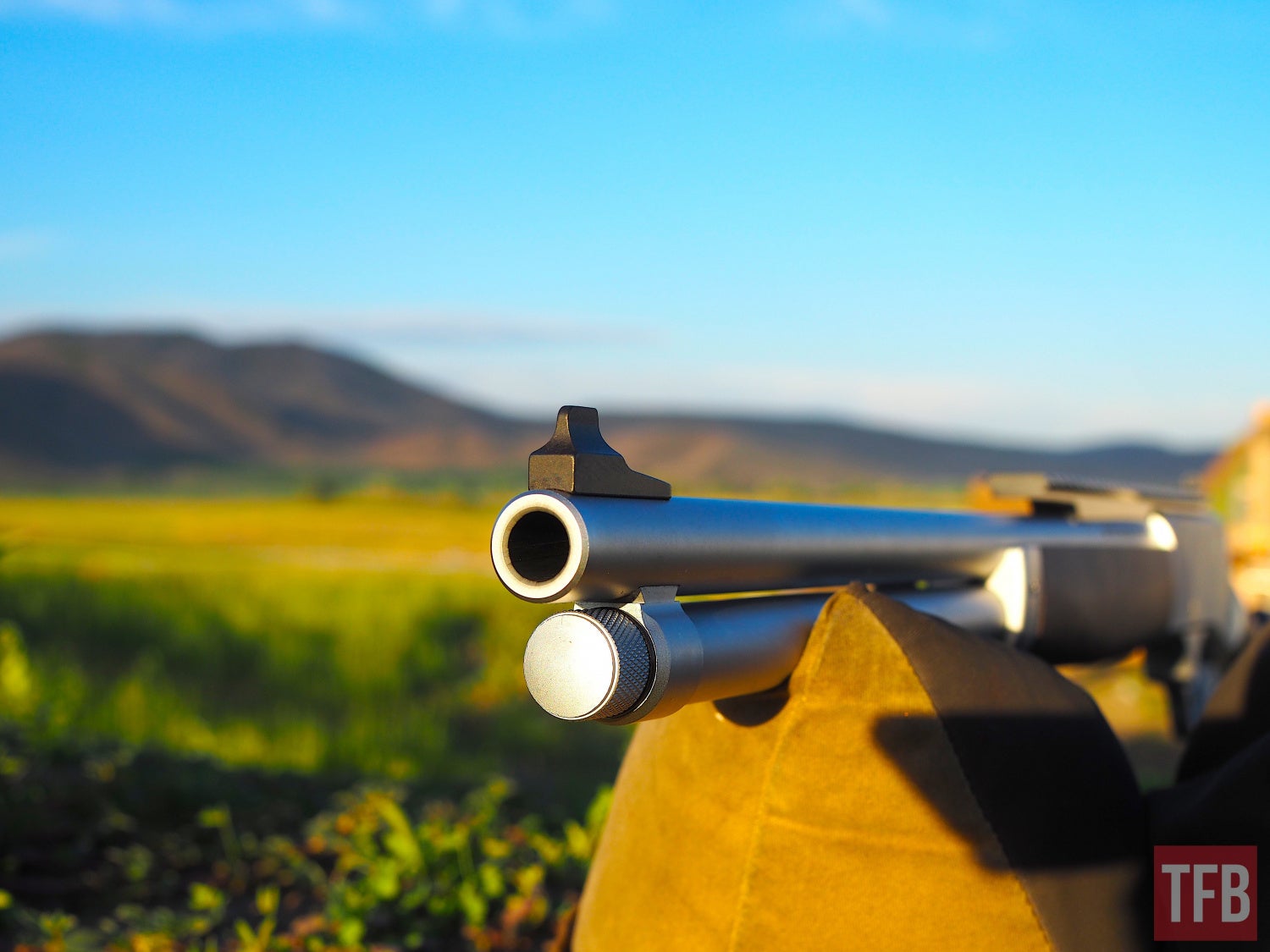
Muzzle
First Shots
I’ve handled quite a few different rifles and shotguns from Henry USA before. On my first range trip with the Henry All-Weather, I couldn’t help but notice how smooth the loading process was via the side gate. Perhaps it was due to the hard chrome plating, but no matter what the bullet profile, cartridges slid very smoothly into the magazine tube.
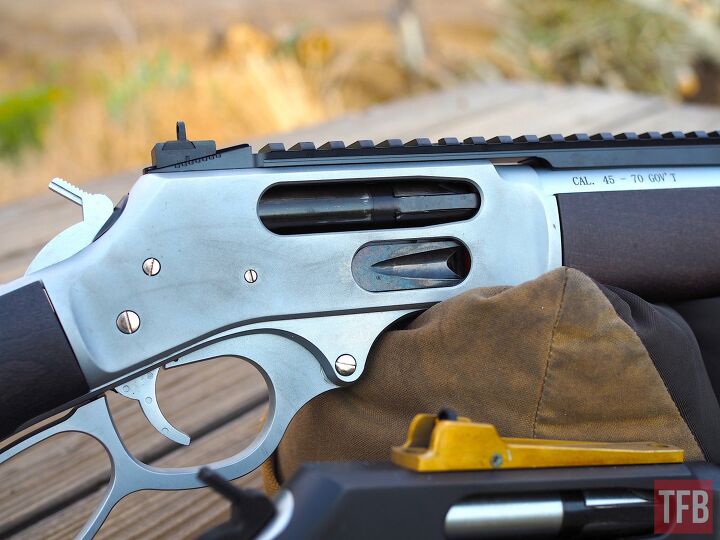
Side loading gate
The ghost ring rear sight, plain blade front sight combination worked rather well under most normal lighting conditions. The sights seemed to be well-zeroed at the factory, and I was able to keep all my initial shots out to 100 yards within 3″. At dawn or dusk, however, the front blade could have used a small tritium vial to stand out better.
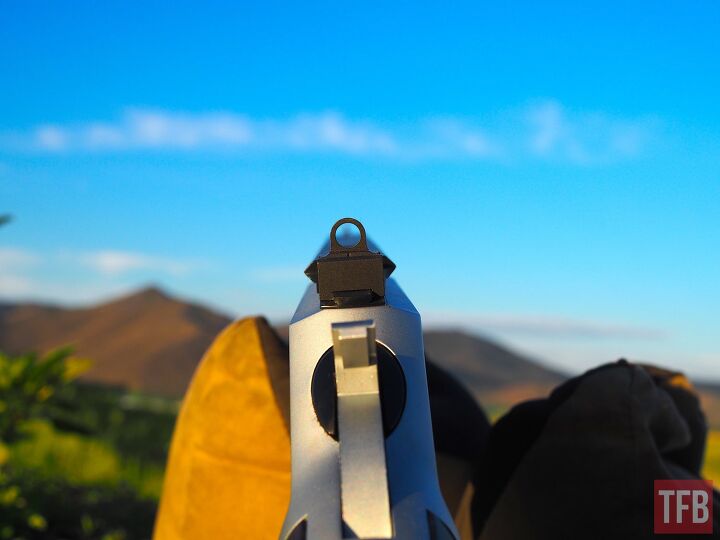
Rear sight
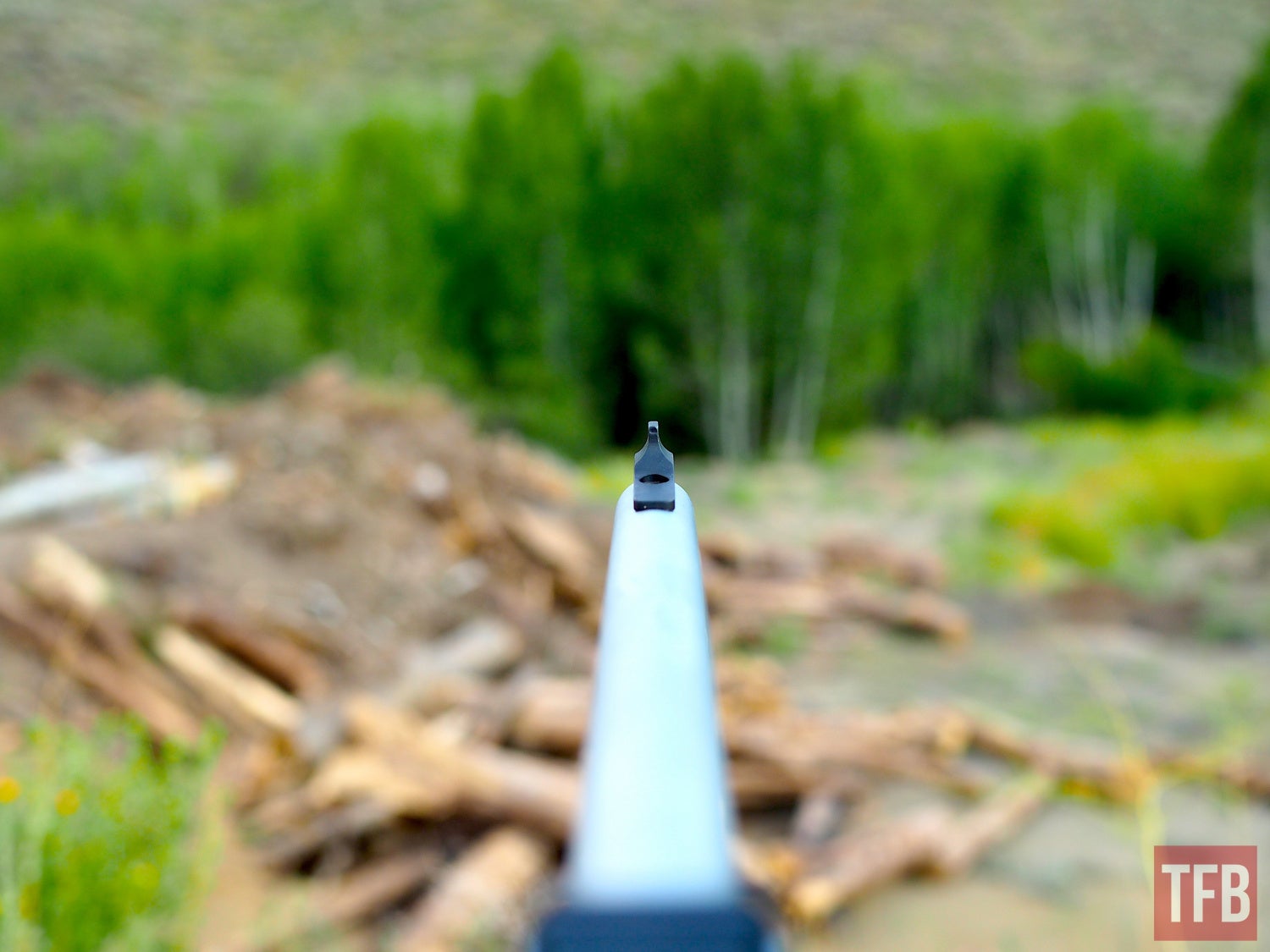
Front sight
The trigger broke cleanly and consistently at 5lbs 2oz, and was one of the better factory lever-action triggers I’ve felt. I’m not sure if the plating of the trigger parts helped in this matter, but I have my suspicions. Like all Henry side gate rifles, this rifle was both easy and fast to load and unload, given the dual features of the side gate and removable magazine tube.
Recoil was extremely mild with black powder cowboy loads (a joy to shoot in the .45-70 platform). Henry really does have one of the better-ventilated rubber recoil pads for this big cartridge. However, prolonged shooting from one or seated positions with stouter modern loads, such as Hornady’s 325gr FTX LEVERevolution or Federal Premium’s 300gr Trophy Bonded Bear Claw is comparable to shooting 3″ 12 gauge loads.
Optics and Accuracy Testing
Equipped with several quality .45-70 loads, I headed to the 100-yard bench to see just how accurate the All-Weather is compared to the previous .45-70 Henry rifles I have shot, as well as my Wild West Guns Alaskan Co-Pilot that I’ve had for years. Offhand at 50y, these sights are quick and easy to pick up, and this rifle consistently produced a ragged, very large hole.
One of the main features of the All-Weather Picatinny version of the Henry .45-70, is the ability to mount a variety of optics on the extended rail. If one wanted to, one could have room to throw on a red-dot/magnifier combo, or even an in-line night vision device.
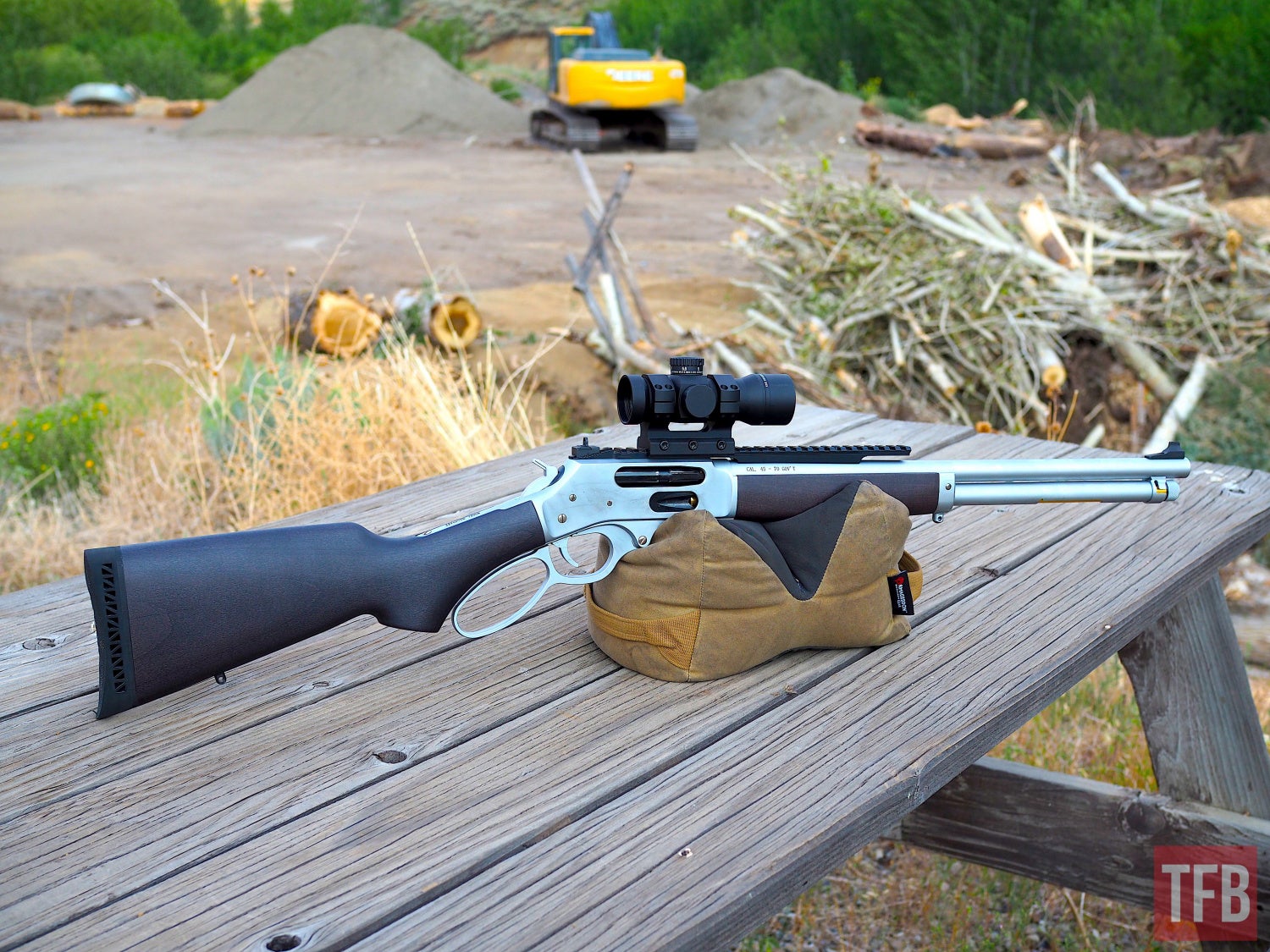
With RDS
This rifle was lighting quick to use with a red dot mounted on it. For precision accuracy testing, I also threw an LVPO that I use for such tests onto the rail. The scope height was not ideal but still was ok to use for accuracy testing. For long-term use with a scout scope or LVPO, I would suggest using low rings on most optics for this rifle.
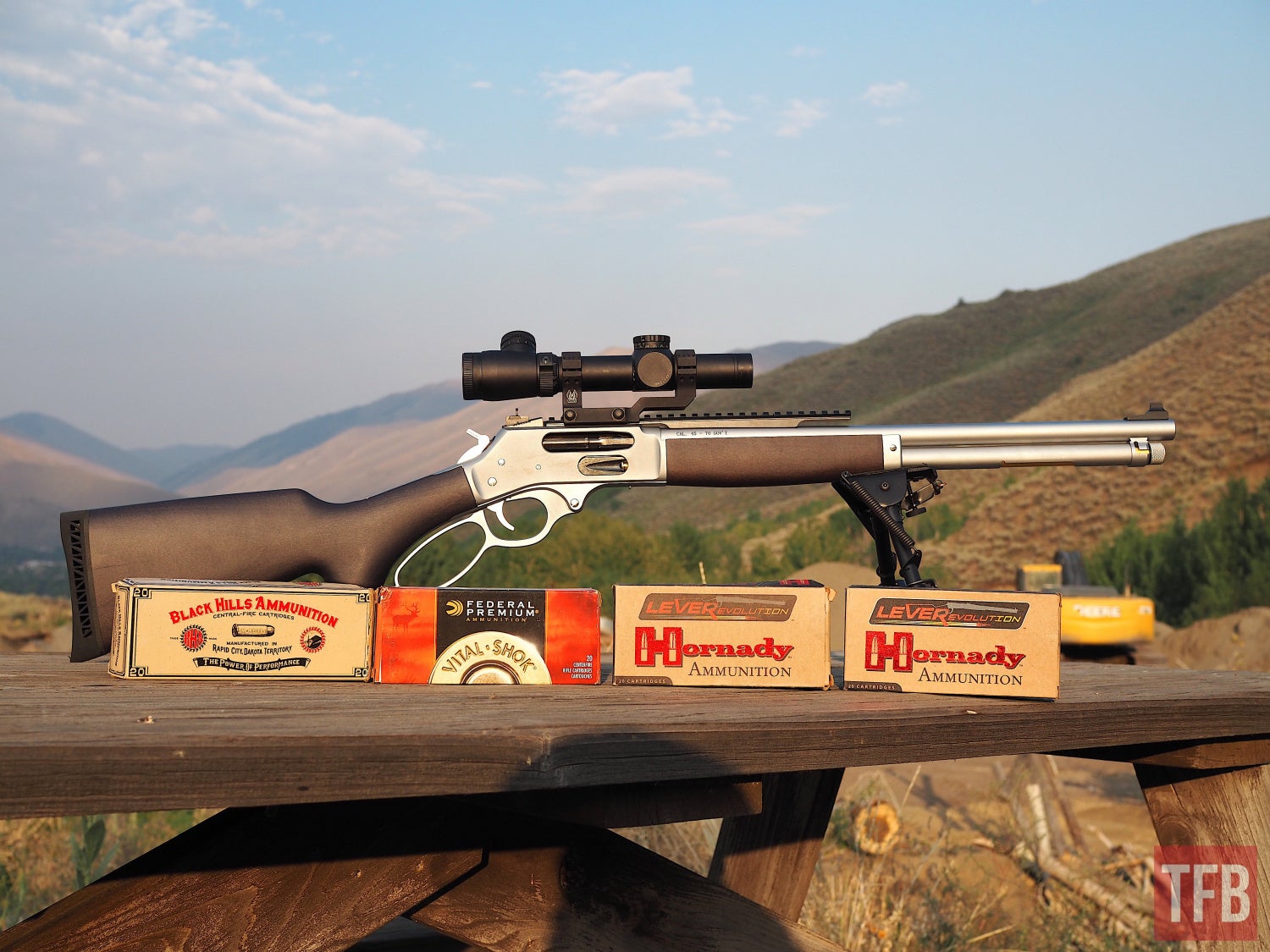
Henry All-Weather ready for accuracy testing
Results are as follows. All results are an average of 5-shot groups, measured center-center and fired with front and rear support from a bench, measured at 100Y.
- Hornady 325gr FTX LEVERevolution: .92″
- Federal Premium 300gr Trophy Bonded Bear Claw: 1″
- Hornady 250gr Monoflex LEVERevolution: 1.2″
- Black Hills 405gr FPL Cowboy: 2.2″
This was excellent accuracy for a .45-70. Accuracy-wise the Henry All-Weather is right on par with my Alaskan Co-Pilot. It is also the most accurate Henry I have shot to date. I would feel very confident using the Henry All-Weather in a hunting situation. The Henry All-Weather also had zero malfunctions in over 200 rounds of testing.
Overall Impressions:
The Henry All-Weather weathered all of my testing with aplomb. There was not a speck of rust on the rifle, even when exposed for long periods of time to muggy, filthy conditions on my farm, and it cleans easily. The sights are easy to use and adjust, and the long Picatinny rail provides plenty of sighting options.
Objectively, the accuracy and reliability of this rifle were excellent. Subjectively, the feature set, fit, and finish of the Henry All-Weather Picatinny was a very total package, with only a few things I would change. If you’re in the market for a hard-use .45-70, I highly recommend one takes a look at a Henry All-Weather.
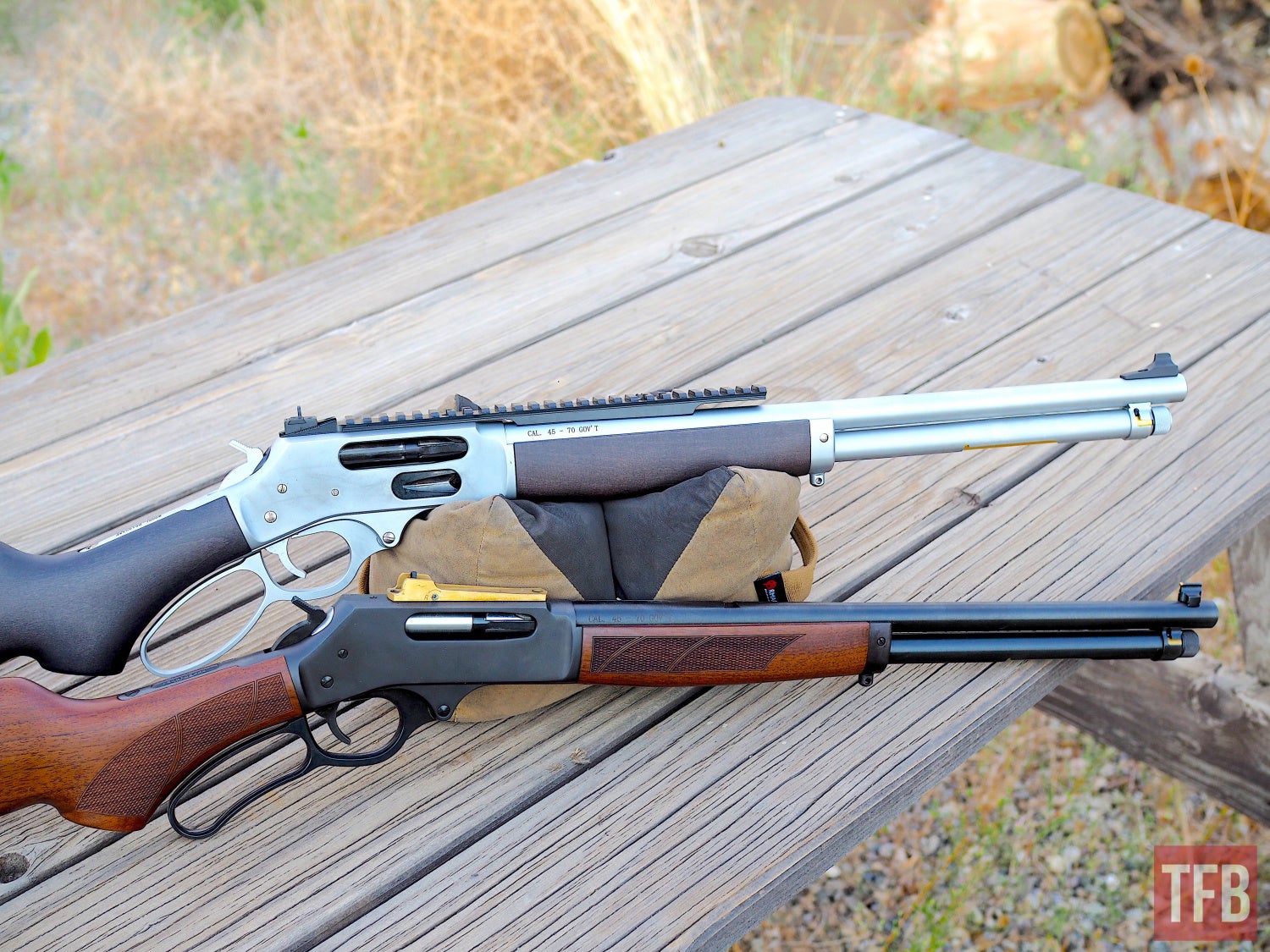
Henry All-Weather Side Gate in comparison to a no-side gate. Note aftermarket rear peep I had to get for the older version. No need on the newer Henry.
Pros:
- Excellent hard chrome plating and treated hardwood stock
- Very good adjustable rear peep sight and extended rail for optic mounting
- Great trigger
- Excellent accuracy for a .45-70
Cons:
- No porting or threading at the muzzle
- Front sight can be hard to acquire in dim conditions
For more information, please visit Henry USA.
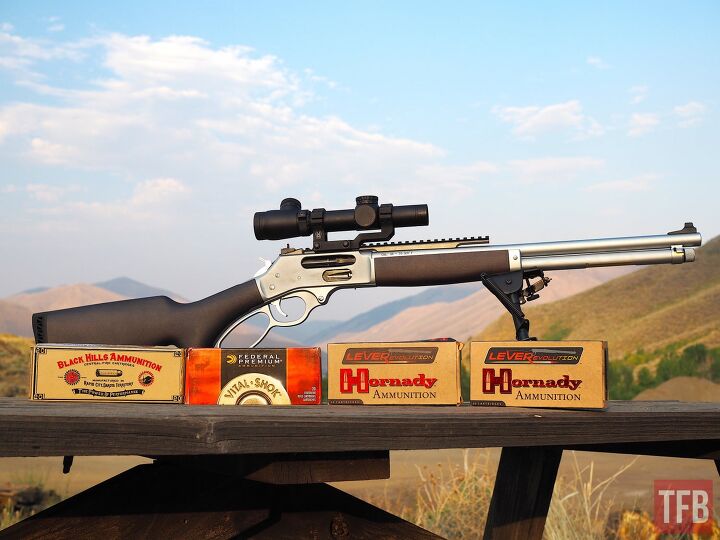
Thanks to Henry USA for the opportunity!
We are committed to finding, researching, and recommending the best products. We earn commissions from purchases you make using the retail links in our product reviews. Learn more about how this works.
 Your Privacy Choices
Your Privacy Choices
